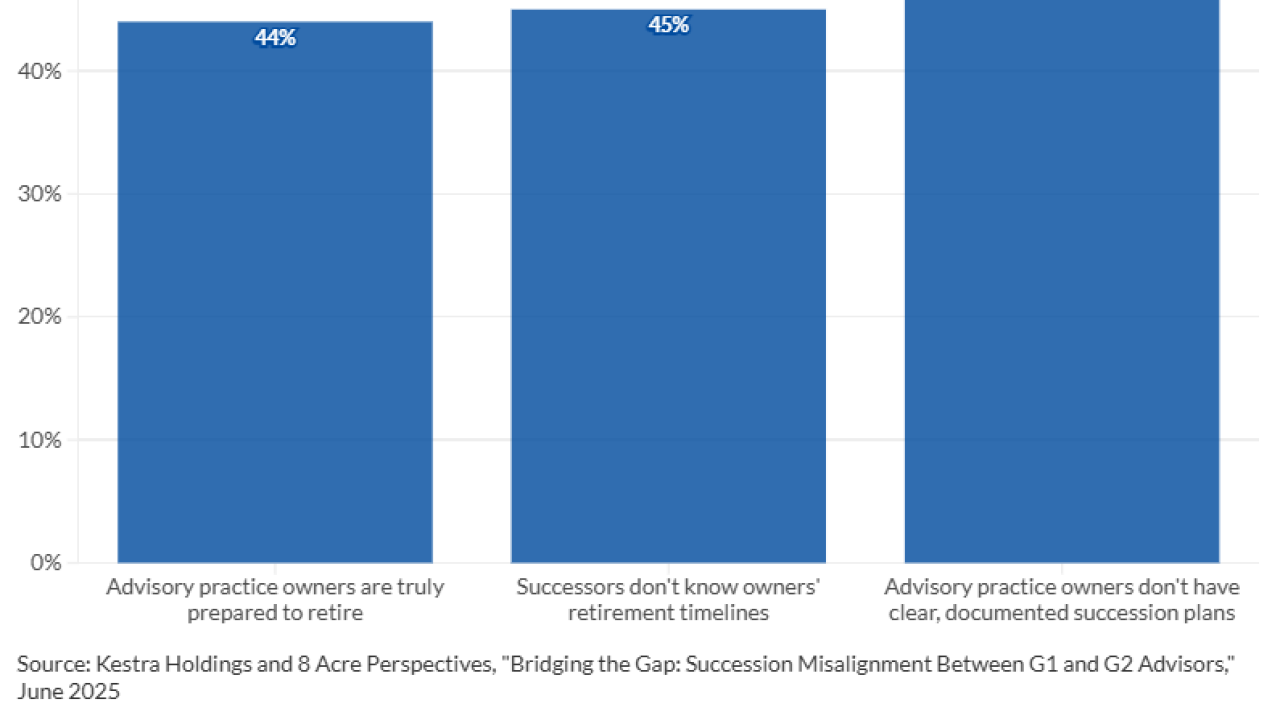Over the past several decades, the number of investable asset classes has increased significantly, changing the world of portfolio management dramatically.
The challenge of asset allocation now is no longer having too few ingredients to consider but rather selecting among an ever increasing array of sector-specific mutual funds and exotic ETFs.
Choosing an asset allocation model for your clients’ portfolios is not so much about picking the right one — there’s no way to know which model will be right in advance of future performance — as it is about selecting a prudent one. Being prudent and thoughtful is certainly something an advisor can — and must — do in order to meet a fiduciary duty.
Toward that end, I reviewed a series of asset allocation models over the past 45 years, from 1970 through the end of 2014, to see how they fared.
Reviewing the historical performance of various core asset allocation models delivers a useful analysis of the relative merits of different allocations. The analysis should better equip advisors to evaluate a wide variety of investment models — particularly in the online investment advisory space, where new robo advisors are promoting models designed to appeal to a wide audience.
COMPARING MODELS
By definition, an asset allocation model must include more than one asset class. In this analysis, I have identified three asset allocation models: a 50% cash/50% bond model, a 60% stock/40% bond model and a seven-asset model. Two single asset classes (cash and large-cap U.S. stock) are also evaluated to serve as bookend benchmarks.
The first portfolio option shown in the “Asset Allocation Spectrum” chart below is a 100% cash model, composed completely of 90-day U.S. Treasury bills. As cash is viewed as the risk-free asset class in modern portfolio theory — inflation risks notwithstanding — we will use its returns and volatility as the base for comparison.

The 45-year annualized return for cash was 5.11%, with a standard deviation of annual returns of 3.45%. The average 10-year annualized rolling return was 5.64% over the 36 rolling 10-year periods between 1970 and 2014.
From there I looked at progressively more complex allocation models.
The first is a very simple one: 50% cash/50% U.S. aggregate bonds, rebalanced at the start of each year. Compared with 100% cash, this 50/50 allocation improved performance 143 basis points while only increasing volatility by 70 bps — a performance-to-risk trade-off of two to one. The average 10-year rolling return was just shy of 7%.
Next, I looked at a classic balanced fund: 60% large-cap U.S. stock and 40% U.S. bonds, rebalanced at the start of each year. Performance, as expected, was boosted significantly to 9.82%; the average rolling 10-year return also rose, to 10.35%. But there was a concomitant increase in volatility, with the standard deviation rising to 11.28%.
The third model used seven asset classes — large-cap U.S. stock, small-cap U.S. stock, non-U.S. developed-market stock, real estate, commodities, U.S. bonds and cash — in equal proportions, rebalanced annually.
The average annualized return was 10.12%, with a standard deviation of annual returns of 10.18% — a rare one-to-one return-to-risk trade-off. The average 10-year rolling return was 10.88%, 53 bps higher than the 60/40 model.
The final investment asset was 100% large-cap U.S. stock. As anticipated, it had a higher level of return — an annualized 10.48%, with average 10-year rolling return at 11.21% — but not by much. Meanwhile, with a standard deviation of 17.43%, volatility was far higher than both the 60/40 model and the seven-asset model.
MAKING THE PORTFOLIO LAST
The second part of this analysis compares three allocation models when used in a retirement portfolio — which is very sensitive to timing of returns, particularly large losses. (For that reason, I didn’t include a retirement portfolio consisting of 100% large-cap U.S. stock, as that approach is not prudent.)
The retirement portfolio was simulated over 21 rolling 25-year periods starting in 1970. The first 25-year period was 1970 to 1994, then 1971 to 1995, etc. A total of $455,741 was withdrawn during each rolling 25-year period. The ending balance after each 25-year period is shown in the “Retirement Survival” chart below.

This analysis assumed an initial nest egg balance of $250,000 — quite comfortable back in 1970, although fairly modest now — with an initial withdrawal rate of 5% (or $12,500 in year one) and an annual cost of living adjustment of 3%. Thus, the second-year withdrawal was 3% larger (or $12,875), and so on each year.
As a baseline, I included a retirement portfolio consisting of 100% cash, which fared reasonably well during the early periods (1970s and 1980s). Beginning with the 25 years starting in 1982, however, interest rates began a steady decline downward and an all-cash retirement portfolio began to crumble.
In fact, during the last two 25-year periods, the all-cash portfolio failed to last the full 25 years; hence the zero balance. An all-cash portfolio would also have been unable to keep up with inflation. The median ending account balance for an all-cash retirement portfolio was $332,615.
A 50% cash/50% bond retirement portfolio was a considerable improvement, surviving in every one of the 25-year periods, with median ending account balances of just over $570,000. However, in recent 25-year periods, the ending balance was far below that median figure.
The classic 60/40 stock/bond retirement portfolio has served retirees well over the past 45 years. The median ending balance for the 60/40 portfolio was in excess of $1.5 million. In fact, over one buoyant period — from 1975 to 1999 — this portfolio finished with an ending account balance of $3.9 million.
During that same 25-year period, an all-cash retirement portfolio ended with a balance of $391,702, and a 50% cash/50% bond portfolio finished the 25-year period with a balance of $611,308.
The superior approach, however — with a median ending balance of over $2.1 million — is the model using seven different asset classes.
RISING RATES
I found it particularly interesting that, during the inflationary periods of the 1970s, the seven-asset model had considerably better performance as a retirement portfolio — finishing with a balance of $2,086,863 for the 1970 to 1994 period, while the 60/40 model ended up at $1,090,081. The pattern recurs in the first four 25-year periods.
Why that’s worth considering: Over the past 33 years — after the U.S. economy began to decline in 1982 — U.S. bonds have enjoyed an era of unusual prosperity. The average annualized return of U.S. bonds was 8.39% from 1982 to 2014.
But during the 34 years from 1948 to 1981, when interest rates were rising in the U.S. economy, bonds produced an average annualized return of 3.83%.
When interest rates eventually do rise, the performance tailwind for U.S. bonds that has been fostered by declining interest rates could turn into a stiff headwind. An asset allocation model that has a large commitment to U.S. bonds (such as the classic 60/40 portfolio) may be at risk — because if interest rates rise, bond returns will likely be far lower than over the past three decades.
This suggests that a more broadly diversified portfolio is prudent — both in the accumulation years and in the retirement years.
Craig L. Israelsen, a Financial Planning contributing writer in Springville, Utah, is an executive in residence in the personal financial planning program at the Woodbury School of Business at Utah Valley University. He is also the developer of the 7Twelve portfolio.
Read more:





